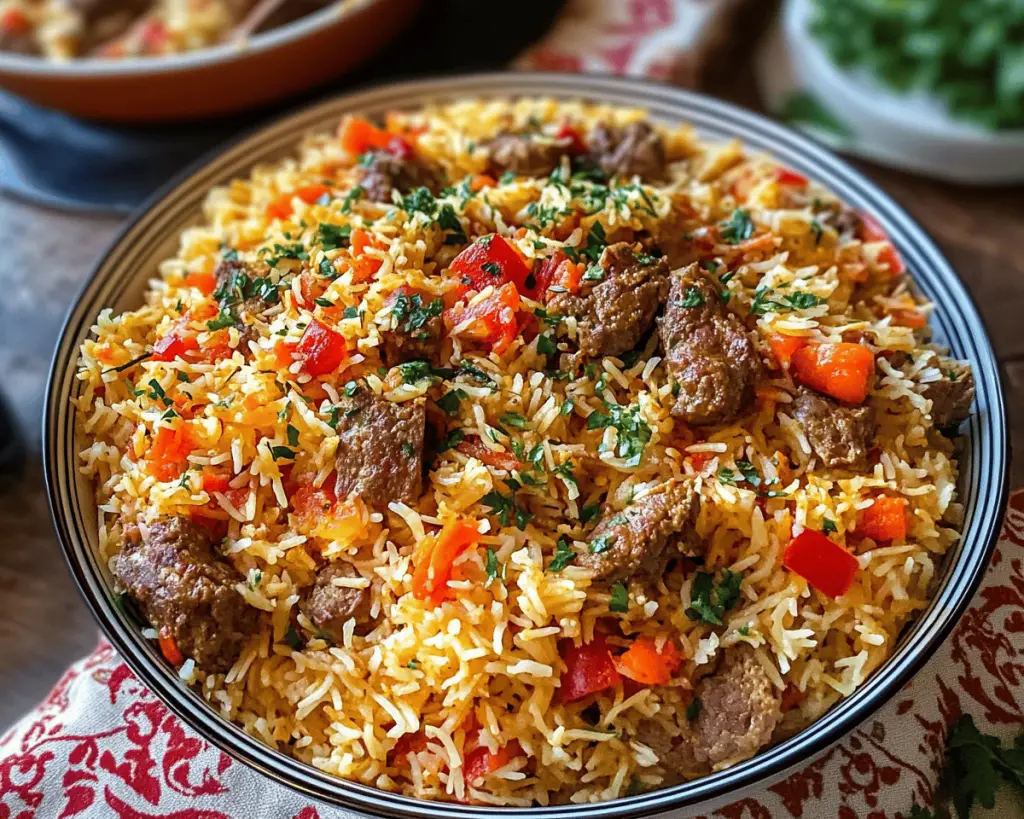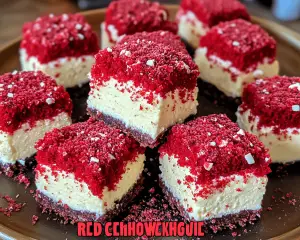You know how sometimes a dish can take you right back to your childhood with just one whiff? For me, that magic happens with plov. Growing up in a household where the aromas of spices danced through the air like old friends was pretty ordinary—yet extraordinary all at once. My mother would stand at the stove, her hands moving gracefully as she stirred, chatted, and sometimes sang old folk songs as she prepared her version of this beloved rice dish.
The stories around plov, or pilaf as it’s known in some cultures, are rich and varied, but my favorite is the one about how it was originally made to feed the masses. Traditionally, plov is a dish woven deeply into the fabric of Central Asian cuisine, especially in Uzbekistan. I remember my dad would humorously say, “Only make enough plov for the guests you want to keep—everyone eats more than they intend!” And boy, they do. This dish is not just a meal. It’s an experience, a gathering around the table where laughter meets comfort, where shared stories come alive, and where the heart of the home truly shines.
The first time I attempted to make plov on my own, I was terrified. I had no written recipe, just the hazy memories of my mother working her magic. Let’s just say I made a few mistakes—who knew the rice-to-water ratio was such a science? Yet each attempt helped me refine my journey. This dish taught me patience, creativity in the kitchen, and a little sprinkling of love, of course!
Today, I want to share the best plov recipe that’s come together through many trials and a bit of nostalgia. So, grab a pot, and let’s get started.
What Goes Into Plov?
Now, let’s break down what we’ll need for this beautiful dish:
**1. Rice**: The star of the show! You want to use **long-grain rice** like basmati or jasmine. Honestly, I often choose basmati because of its wonderful aroma, but jasmine does give a nice stickiness if you prefer that. Aim for about 2 cups of rice. Here’s the thing—you’ll want to rinse it under cold water until the water runs clear. This removes the excess starch, which can lead to clumping. I sometimes get a bit overzealous rinsing, but trust me, this step is crucial.
**2. Meat**: Typically, this is made with **lamb**. However, don’t feel imprisoned by tradition—my friend once made plov with chicken, and it turned out amazing! You’ll need around 1 pound of meat, diced into bite-sized pieces. If you venture down the lamb path, just know it will add a richness that’s hard to beat.
**3. Onions**: You can’t go wrong with **two large onions**, chopped finely. My mother always said that the secret to flavor is in those onions, so don’t skimp on them. They can get nice and sweet when sautéed, which adds to the overall flavor profile.
**4. Carrots**: The dish would lack color without **two large carrots**, grated or julienned. There’s something about their sweetness that balances the savory depths of the meat and spices. I remember the first time I forgot the carrots—big mistake! It’s like making a cake without sugar, you know what I mean?
**5. Garlic**: A whole head of **garlic**, unpeeled. Yes, I said it. Trust me on this one. The garlic adds a subtle richness to the plov. It’s kind of like inviting a friend over who just quietly enhances the vibe. I throw them in whole, and they get wonderfully soft as they cook.
**6. Spices**: This is where things get exciting! You’ll want:
– **Cumin**: 1 tablespoon. Earthy and warm.
– **Coriander**: 1 tablespoon. Fruity and aromatic.
– **Turmeric**: 1 teaspoon. This adds a beautiful golden hue to the rice and has a lovely, warm flavor.
– **Salt**: General seasoning to taste, about 1 to 2 teaspoons.
– Optional: A pinch of saffron, if you’re feeling fancy.
**7. Oil**: About ½ cup of **vegetable oil** or **ghee**. I personally prefer ghee—it adds a nutty depth.
**8. Broth or Water**: You’ll need around 4 cups of **broth or water**. I lean towards broth for extra flavor.
**9. Sumac**: Finally, a sprinkle of **sumac** just before serving adds a tangy finish that elevates the entire dish.
Could you already see the color of that plov? The golden rice, tender meat, and bright carrots combine into a sight that is sure to get anyone’s appetite going!
Is Plov Actually Good for You?
Here’s the thing… plov can be seen as one of those comfort foods that also pack a nutritious punch. Sure, it’s not a salad, but it can be well-balanced! The **meat** in plov provides a generous source of protein, and the **carrots** are loaded with vitamins and minerals. Not to mention, the **spices** have numerous health benefits. Cumin and coriander, for instance, can aid digestion, while turmeric is celebrated for its anti-inflammatory properties.
Now, I won’t lie to you—plov can be a bit indulgent considering the oil, but that’s part of the charm! It’s worth every bite when you’re gathered around with loved ones. I always say, “Everything in moderation, including moderation.” And that’s how I justify enjoying it without a guilt trip.
Here’s What You’ll Need
– **2 cups long-grain rice**
– **1 pound meat (lamb or chicken)**
– **2 large onions, diced**
– **2 large carrots, grated or julienned**
– **1 whole head of garlic**
– **1 tablespoon cumin**
– **1 tablespoon coriander**
– **1 teaspoon turmeric**
– **Salt to taste**
– **½ cup vegetable oil or ghee**
– **4 cups broth or water**
– **Sumac, for garnish (optional)**
This should serve about 6-8 people, depending on how hearty your servings are. You might want to invite a friend or two because once you start, it’s hard to stop!
How to Make Plov Step-by-Step
Alright, let’s get into the nitty-gritty of this recipe, shall we? Prepare yourself for a bit of a sensory delight.
1. **Start by soaking the rice**: In a large bowl, add your **rice** and cover it with water. This needs to soak for at least 30 minutes. I usually find this is a good time to sip on some tea and daydream about a plov feast.
2. **Heat the oil**: In a large, heavy-bottomed pot or a Dutch oven, pour in your **oil** and heat it over medium heat. You want it to be hot enough to sizzle when you add the onions.
3. **Sauté the onions**: Toss in the diced **onions**, and cook them until they’re golden and fragrant. Stir, and don’t forget to scrape up any brown bits at the bottom—those are flavors waiting to be released!
4. **Add the meat**: Now, add your meat (lamb or chicken) and brown it well on all sides. This must be one of the best parts—watch the bits of meat sear! The smell fills your kitchen, and it’s downright heavenly. I like to sprinkle a bit of salt during this stage to help draw out the moisture.
5. **Toss in the spices**: After the meat has a good color on it, add in the **cumin**, **coriander**, and **turmeric**. Give everything a good stir—like a dance party in the pot—until the spices become fragrant.
6. **In with the carrots**: Add the grated **carrots** next and stir them in. They’ll cook down a bit, and their sweetness will start to meld with the meat and spices.
7. **Drain and add the rice**: By now, your rice should be nice and plump from soaking. Drain it and gently layer it over the meat and vegetable mix. Try not to stir it too much—just keep it layered.
8. **Pour in the liquid**: Slowly pour your **broth or water** gently over the rice. You want to cover everything without disturbing the layers. This gets a little tricky, but it’s worth it.
9. **Add in the garlic**: Now, take that whole head of **garlic** and bury it gently right in the center of the rice. It’s the treasure that makes everything better!
10. **Season**: Sprinkle some salt on top, and cover the pot with a tight lid. If you have a piece of cloth (like a clean kitchen towel), you can place it between the pot and the lid to help trap the steam better. This is an old trick that makes a notable difference.
11. **Cook it low and slow**: Bring the pot to a gentle boil over medium heat. Once it bubbles, reduce it to low heat and let it simmer for about 30-40 minutes. Try not to lift the lid! Paging through your Instagram feed can be a good distractor while you wait!
12. **Rest it**: After cooking, turn off the heat and allow it to rest for another 10-15 minutes. It might be torture, but trust me—it’s key to letting those flavors meld together.
13. **Uncover and fluff**: When you’re ready, lift the lid and take a moment to take in that aroma. Carefully fluff the rice with a fork, gently mixing everything. Don’t go wild here; we want to keep the integrity of the grains.
14. **Serve**: Spoon the plov out onto a large serving platter or bowl. Top it with a sprinkle of **sumac** if you fancy, which gives it that vibrant touch.
It’s time to dig in!
Little Extras I’ve Learned Along the Way
Now that you have the basics down, let’s talk about some little tweaks and tips that can elevate your plov experience.
– **Worth a try**: If you’re in the mood for something a little different, consider adding **dried fruits** like apricots or raisins. This can make for a beautiful contrast in flavors. My cousin once added some golden raisins, and it was a party in every bite!
– **Veggie delight**: Want to skip the meat or cater to vegetarian friends? You can easily substitute the meat with hearty vegetables like cauliflower and bell pepper. They soak up all those lovely spices while providing a satisfying bite.
– **Eggs on top**: This might sound odd, but I’ve enjoyed a silky **poached egg** plopped right on top of my plov. The yolk breaks and adds a beautiful richness. It’s something my neighbor swears by, and I’ve been converted!
– **Cooking wine**: In place of water, you can use a splash of white cooking wine in the broth. This imparts a delightful depth that enhances all the other flavors. Just be careful not to overdo it!
– **Make-ahead**: I often make a bigger batch to enjoy leftovers. Plov warms up wonderfully. Just sprinkle a few drops of water and cover it when reheating to prevent it from drying out.
– **Serve alongside**: A simple cucumber and tomato salad drizzled with a splash of lemon juice and olive oil makes an excellent pairing. The freshness of the salad cuts through the richness of the plov.
Every time I make this dish, it brings back memories of family gatherings and long talks around the dinner table. It’s a warm hug on a plate, promised to make any meal an occasion.
This recipe means a lot to me—it’s the love, the warmth, and the stories that surround it. I truly hope you’ll give it a try, perhaps making it your own along the way. Let me know how it goes or if you make any special tweaks—I’d love to hear about it!



